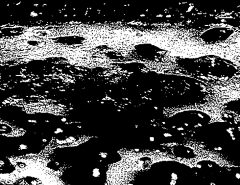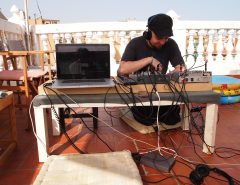http://www.vagueterrain.net/content/archives/journal04/journal04.html
En septiembre apareció el cuarto número de Vague Terrain, dedicado en esta ocasión al cuerpo digital. La siguiente edicion de esta publicación online, prevista para diciembre, llevará por tema el «minimalismo».
not firmly fastened: the body digital
«Everyone carries a room about inside him. This fact can even be proved by means of the sense of hearing. If someone walks fast and one pricks up one’s ears and listens, say in the night, when everything round about is quiet, one hears, for instance, the rattling of a mirror not quite firmly fastened to the wall.»1
While Franz Kafka may not be the first writer that comes to mind when introducing a selection of work examining the digital body, the author’s oeuvre possesses some unique qualities that allow us to approach this theme obliquely. Kafka’s unlucky protagonists always find themselves immersed in a system, the mandate and methodologies of which are utterly incomprehensible. While Kafka’s area of expertise is kangaroo courts, shadow bureaucracies, and mutation it is the device of reflection mentioned in the parable above that is of interest to us here and now. The mirror Kafka speaks of, that which is “not firmly attached to the wall” can be considered a stand-in for any representation of the body.
So how is the body (re)presented through digital technology?
If we use this work as a cipher we are presented with an array of possibilities including: the recoding of gesture and movement, explorations in augmentation, visualization of the social body, and the texture or surface of specific facets of corporality as a site of investigation unto themselves. In the seminal essay “How to Make yourself a Body without Organs?” Deleuze and Guattari call not for holistic conceptions of the body but lament that we haven’t yet sufficiently dismantled ourselves and posit that disassembly would actual open the body to “connections that presuppose an entire assemblage.. passages and distributions of intensity, and territories and deterritorializations measured with the craft of a surveyor.”2 The work presented in this issue of Vague Terrain constitutes a variety of such surveying through which the body is transformed into interface, rewired as instrument, and rendered as dataset.
greg smith / september 2006





Leave a Reply
Lo siento, debes estar conectado para publicar un comentario.